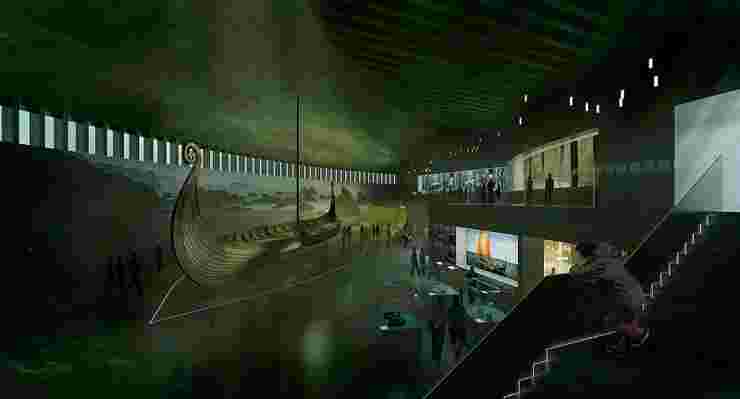When Norwegian architect Arnstein Arneberg designed Oslo’s Viking ship building, back in 1926, he came up with a cruciform-shaped structure, not unlike the many churches that dot the Nordic landscape. As its name suggests, the space housed old Viking ships, and over time, it became known as the Viking Age Museum and turned into one of the most visited museums in Norway. The original building came to be a constraint—not able to comfortably accommodate the surging visitor numbers and not equipped with the kinds of modern amenities now de rigueur in contemporary museums . So, with an eye to the future, the museum recently launched an international competition to select an architect to design an expansion. From a pool of 111 entrants, first prize went to AART Architects, a firm with offices in Denmark and Norway.
AART’s plan will close the loop on two of the branches of Arneberg’s cruciform, creating a circular offshoot of the original plan. The design merges with the initial building, aligning in shape and size with its ends. This arrangement keeps the existing structure intact and lets it serve as the main entrance while allowing visitors to circulate in a more cohesive manner. And the ring-shaped volume comes with another advantage: It frames an outdoor courtyard for visitors to use—when the Norwegian climate permits. Competition juror Harald Nikolaisen said of AART’s winning design that it “provides a very good solution to a complicated challenge.”

The ships will be displayed in the building’s new wing.
As for the ships themselves, they will be housed in AART’s new extension, in galleries much larger than the ones in the original building—the expansion more than doubles the museum’s square footage. Double-height spaces will allow visitors to see them from multiple vantage points, including from up above and directly alongside. Construction of the Viking Age Museum is expected to begin in 2020 and be completed by 2022.
